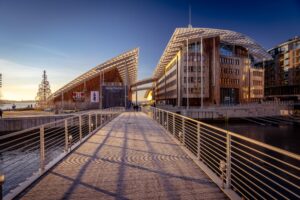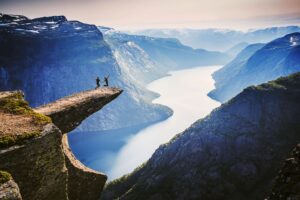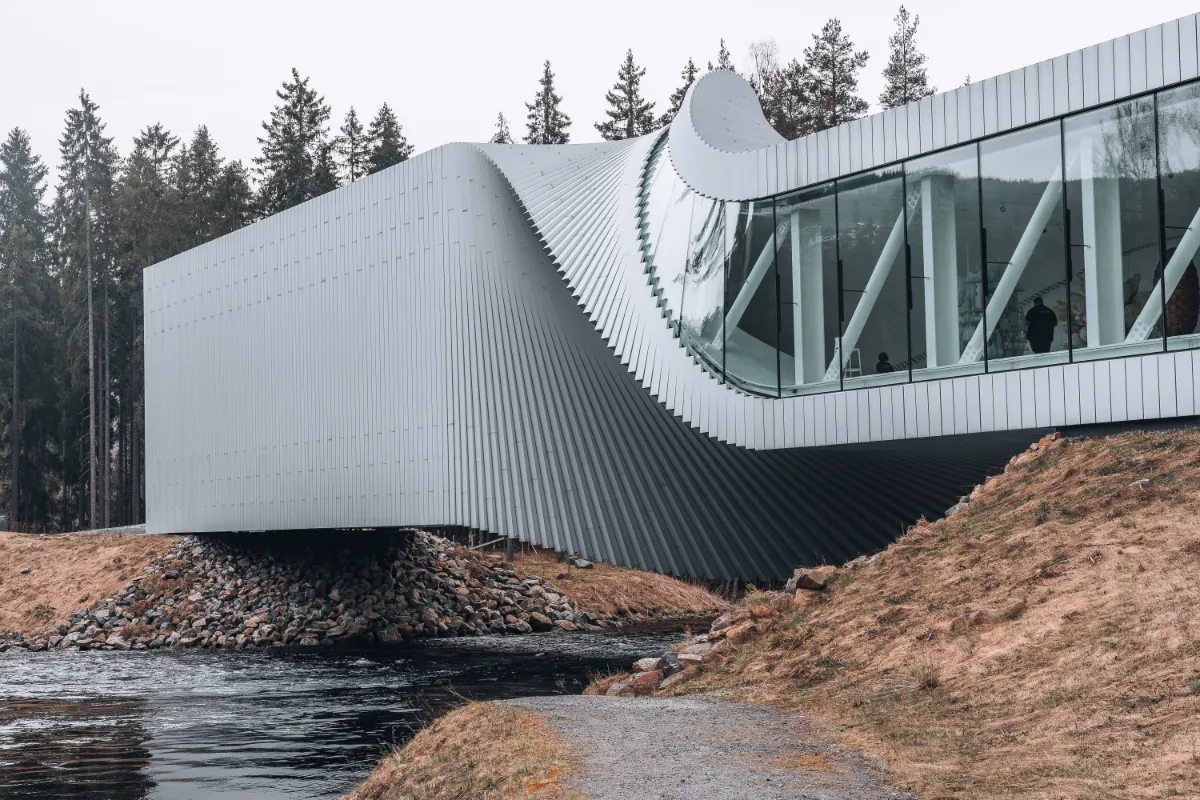
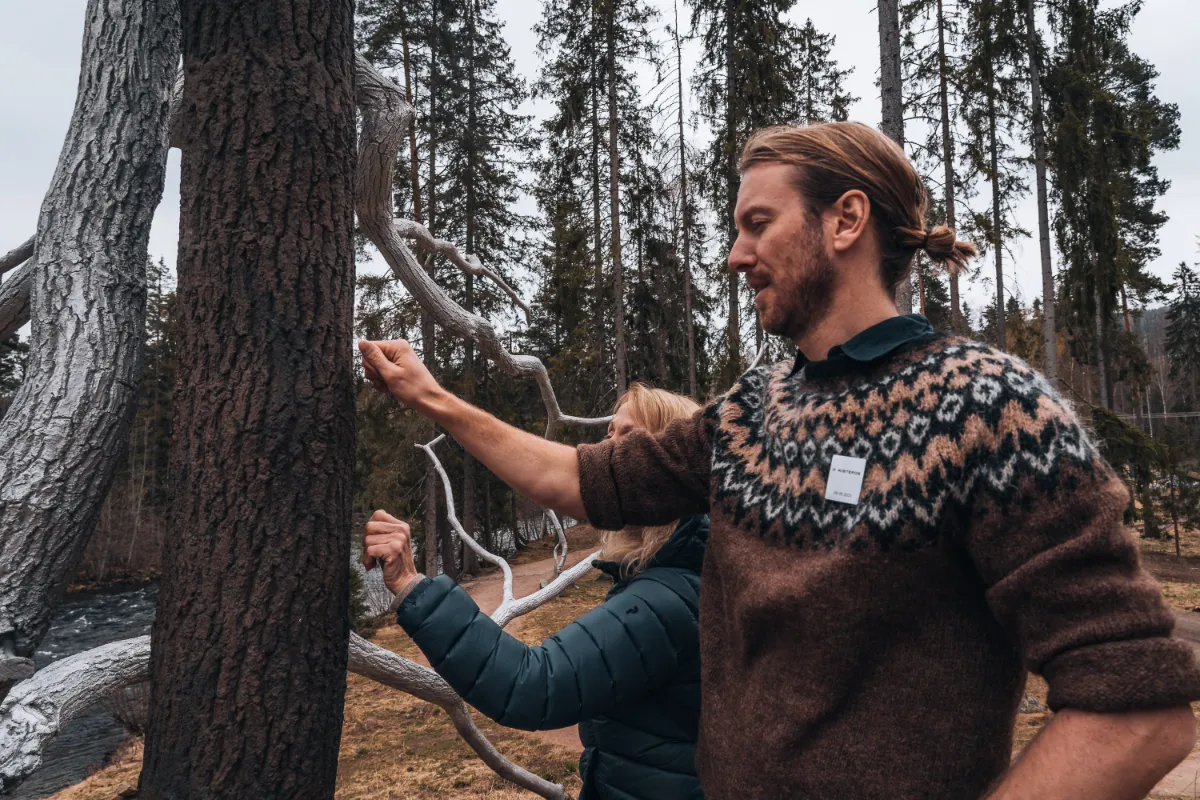
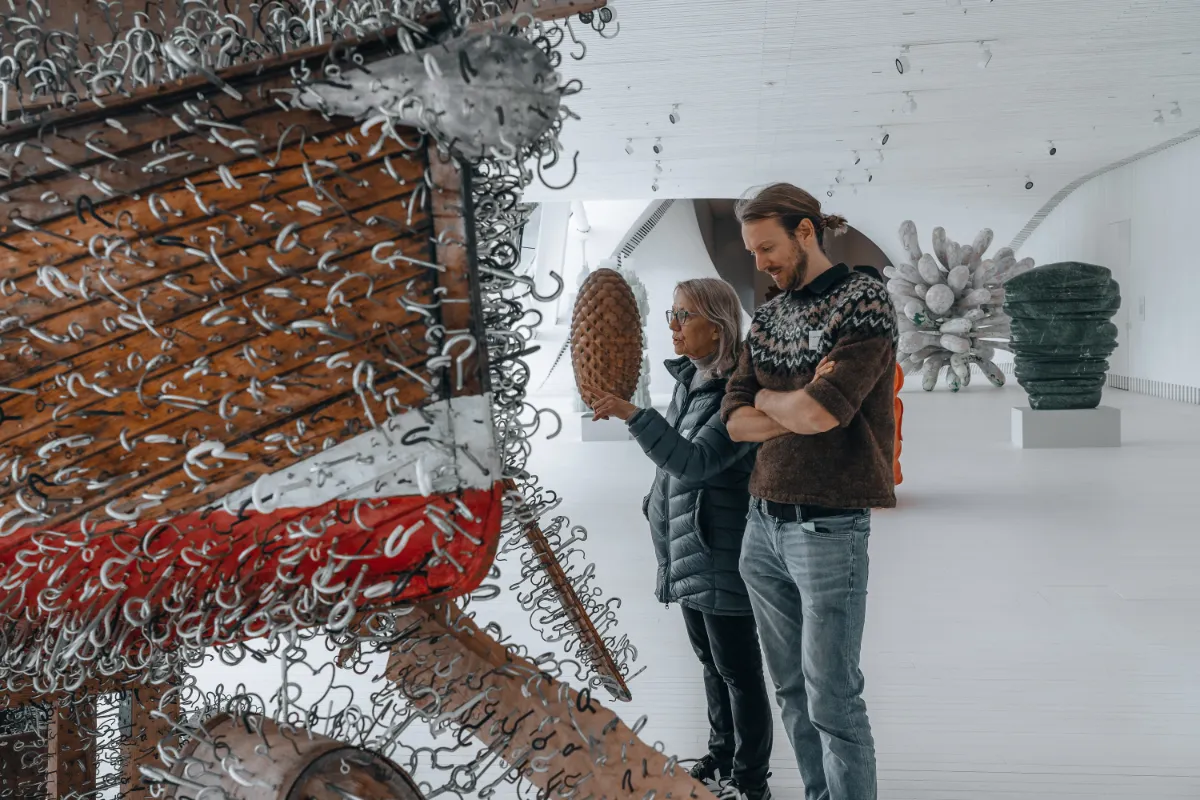
A Brief History of Kistefos Museum
Consul Anders Sveaas was a man of vision and entrepreneurship. He acquired the rights to the waterfall and land to build the wood pulp mill in Kistefos in 1889 and founded A/S Kistefos Træsliberi.
Over the years, the company became a leading wood pulp producer in Norway, and Consul Sveaas remained actively involved in the business until he died in 1917.
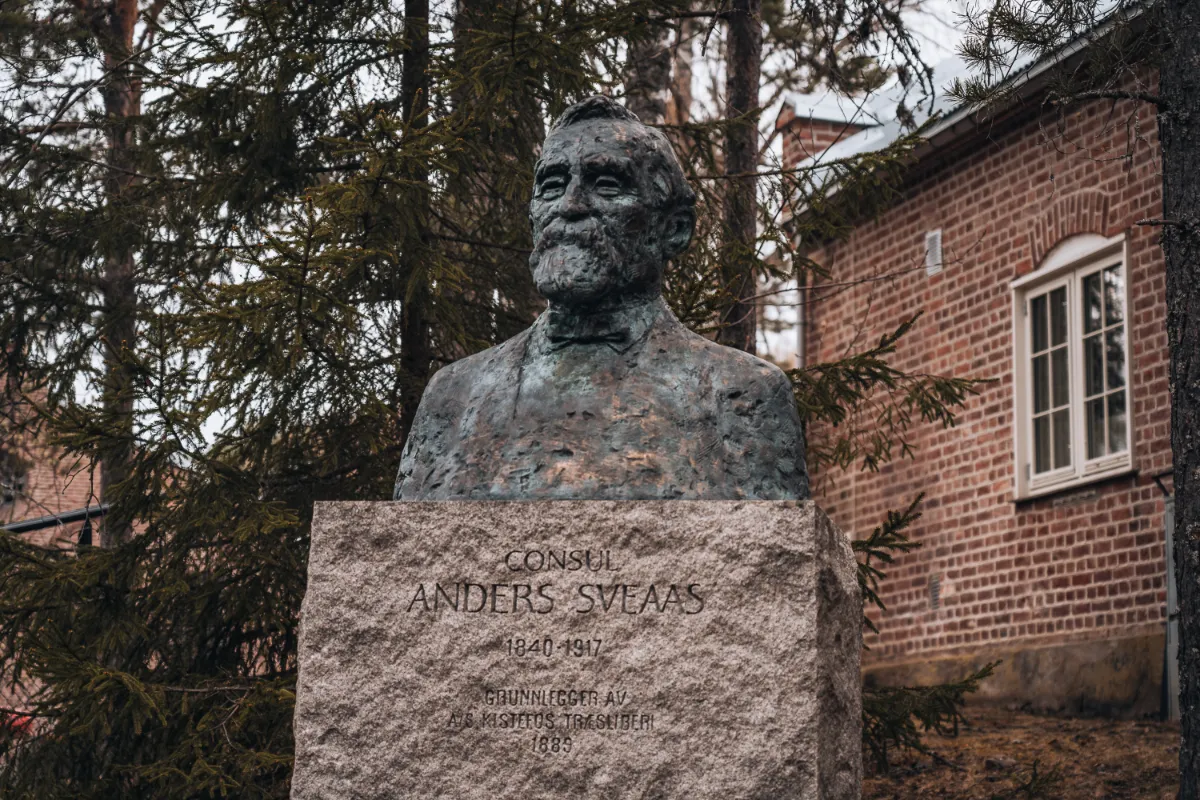
Following his passing, the ownership of A/S Kistefos Træsliberi remained within the Sveaas family, and the company continued to grow and thrive. However, disagreements within the family eventually led to the sale of the company outside of family ownership.
The Kistefos Wood Pulp Mill closed in 1955 after Follum Fabrikker took over production and expenses. However, most of the machinery, inventory, and fixtures remained in their original state, as the lease agreement between the two companies required Kistefos to keep the mill reasonably prepared to resume production if the agreement was terminated.

As a result, the mill remained largely untouched for decades until 1996, when art collector Christen Sveaas, the grandson of Anders Sveaas, the mill’s founder, acquired it and decided to turn it into an industrial history museum.
Today, the Kistefos Museum is a unique monument to Norway’s industrial past, showcasing both the preserved production equipment and an impressive collection of contemporary art, including the iconic Twist Gallery.
Twist Gallery at Kistefos Museum
The Twist Gallery at Kistefos Museum is a unique architectural masterpiece. The gallery is a stunning, 1000-square-meter contemporary art space designed by Danish architectural firm BIG (Bjarke Ingels Group). The building resembles a giant, gleaming white ribbon that winds through the forest and the Randselva River.

The Twist Gallery hosts temporary exhibitions featuring contemporary art and is a must-visit for art lovers. It opened its doors to the public in September 2019 and has already become an international sensation, attracting visitors from all over the world.
In 2019, The New York Times included Kistefos Museum in their list of “52 Places to Go,” stating that “the recently opened Kistefos Museum… promises a cutting-edge cultural experience in an idyllic natural setting.” They also praised the museum’s Twist gallery, calling it a “breathtaking, 121-foot-long structure with a dramatic twist in its middle, that is an art piece in itself.”
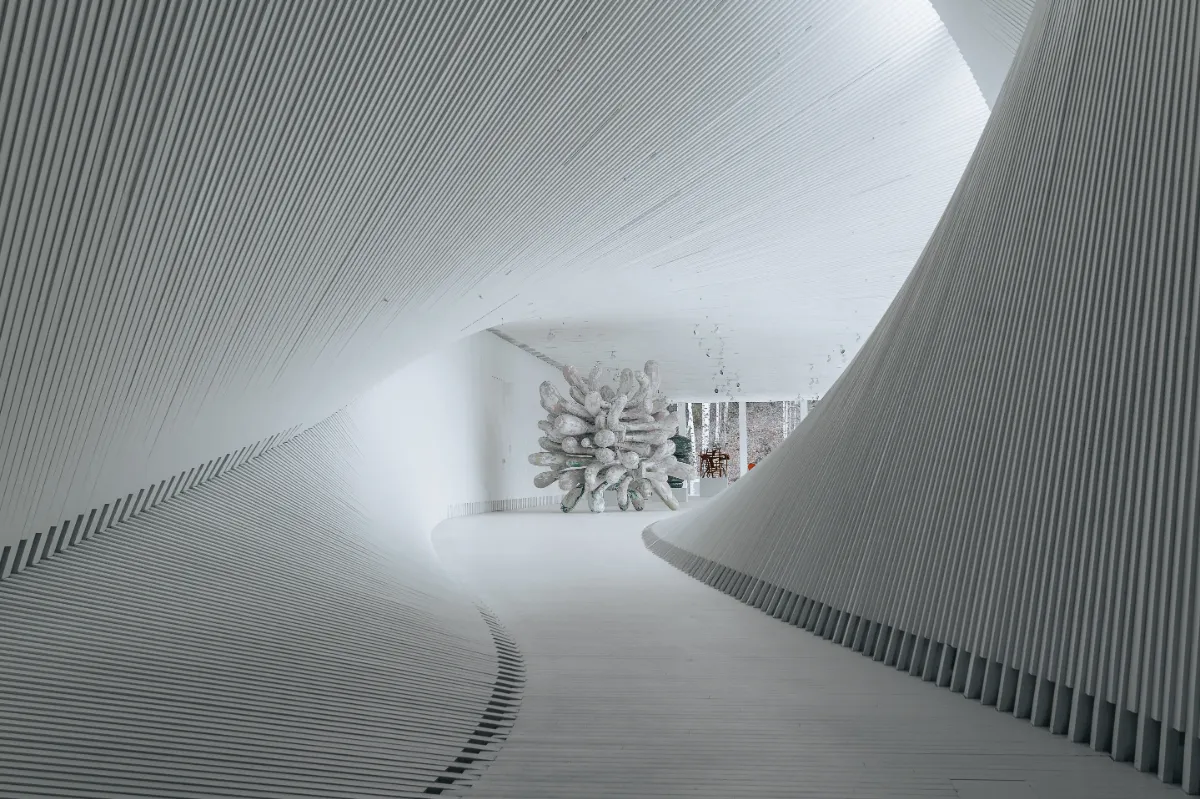
Visiting the Twist Gallery at Kistefos was a unique experience that left a lasting impression on us. We cannot help but be captivated by its striking and unconventional design.
Despite what one may perceive, The Twist at Kistefos Museum is composed entirely of straight lines, with long aluminum and wood panels twisted like a deck of cards to create a fan shape, creating the illusion of curves when in fact everything is linear.
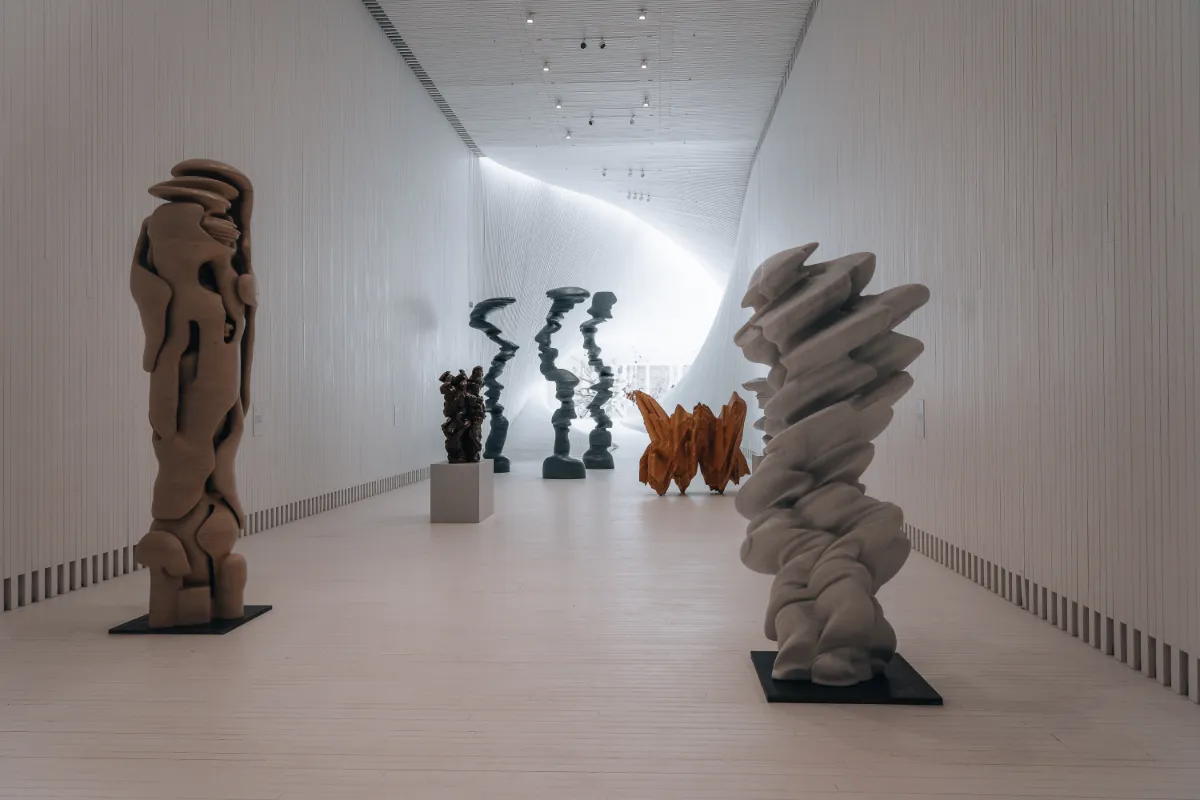
Inside the Twist Gallery, it is so spacious and brightly lit environment perfect for exhibiting artwork. We were captivated by the interior of the Twist and the impressive sculptures made by renowned British sculptor Sir Tony Cragg, whose artwork you can admire inside the gallery during the 2023 season.
Exploring the Sculpture Park at Kistefos Museum
The twist gallery may have been a standout feature of our visit to the Kistefos Museum, but the surrounding sculpture park was a close second. The park now features 51 sculptures created by renowned contemporary artists such as Yayoi Kusama, Claes Oldenburg, Fernando Botero, Tony Cragg, Olafur Eliasson, and Anish Kapoor.
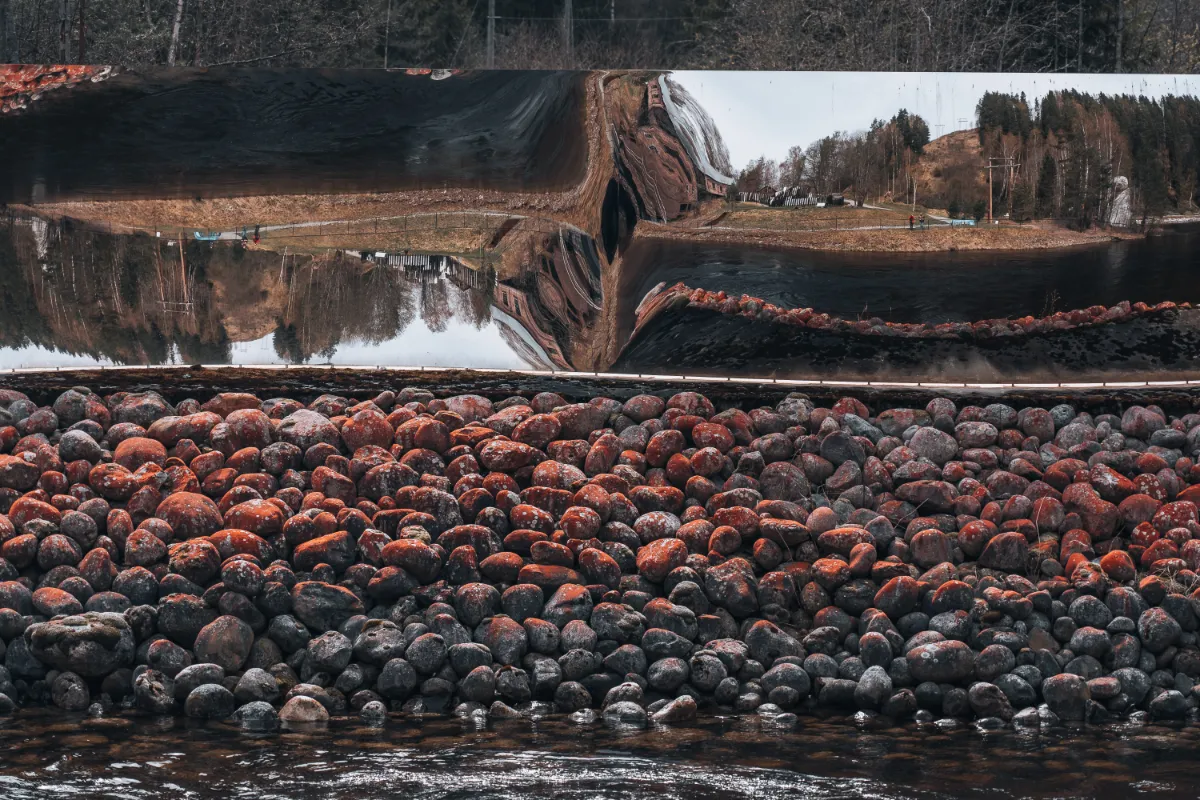
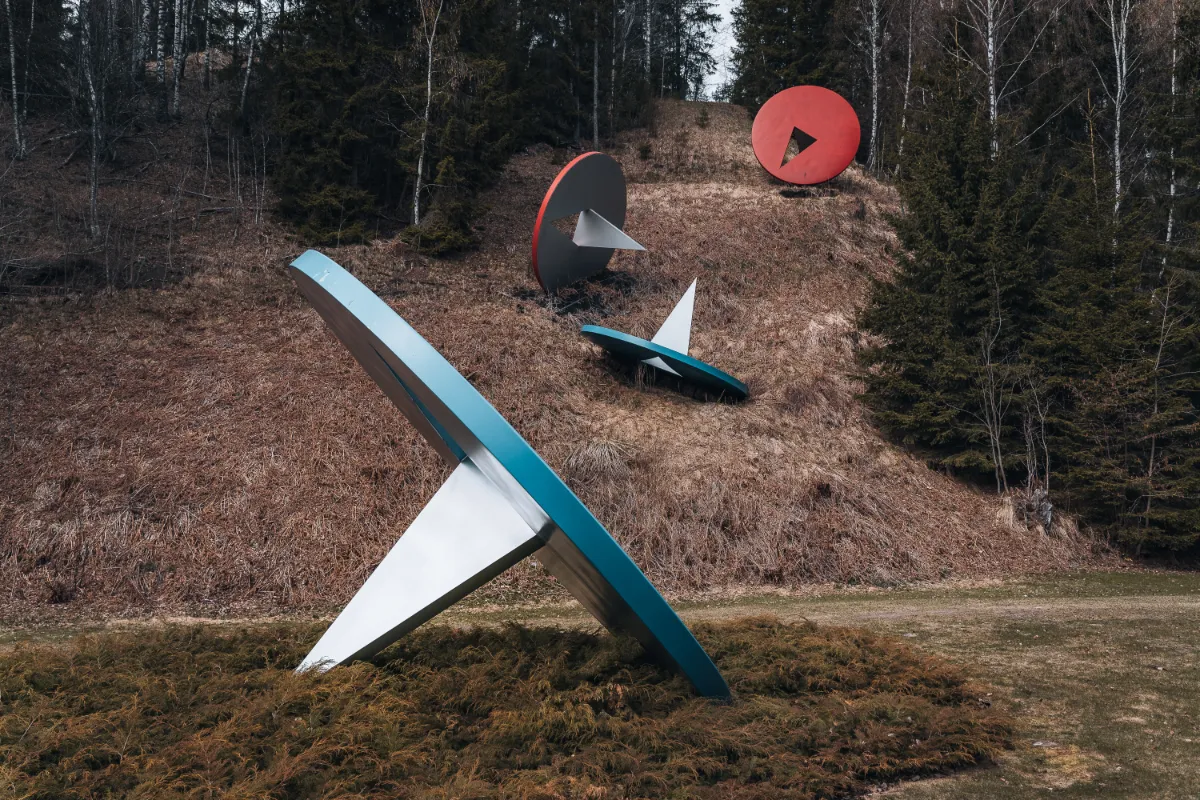

Many of these sculptures are specifically designed for the site, and their authors drew inspiration from the natural surroundings and the industrial history of Kistefos. In addition, the place is constantly evolving as new sculptures are added to the sculpture park every year.
Historic Wood Pulp Mill on River Randselva
The historic wood pulp mill in Kistefos is situated on the banks of the River Randselva, which was used to transport logs from the surrounding forests to the mill. The mill operated from the mid-1800s until it closed down in 1955, leaving behind a complex of buildings and machinery that was slowly being overtaken by nature.
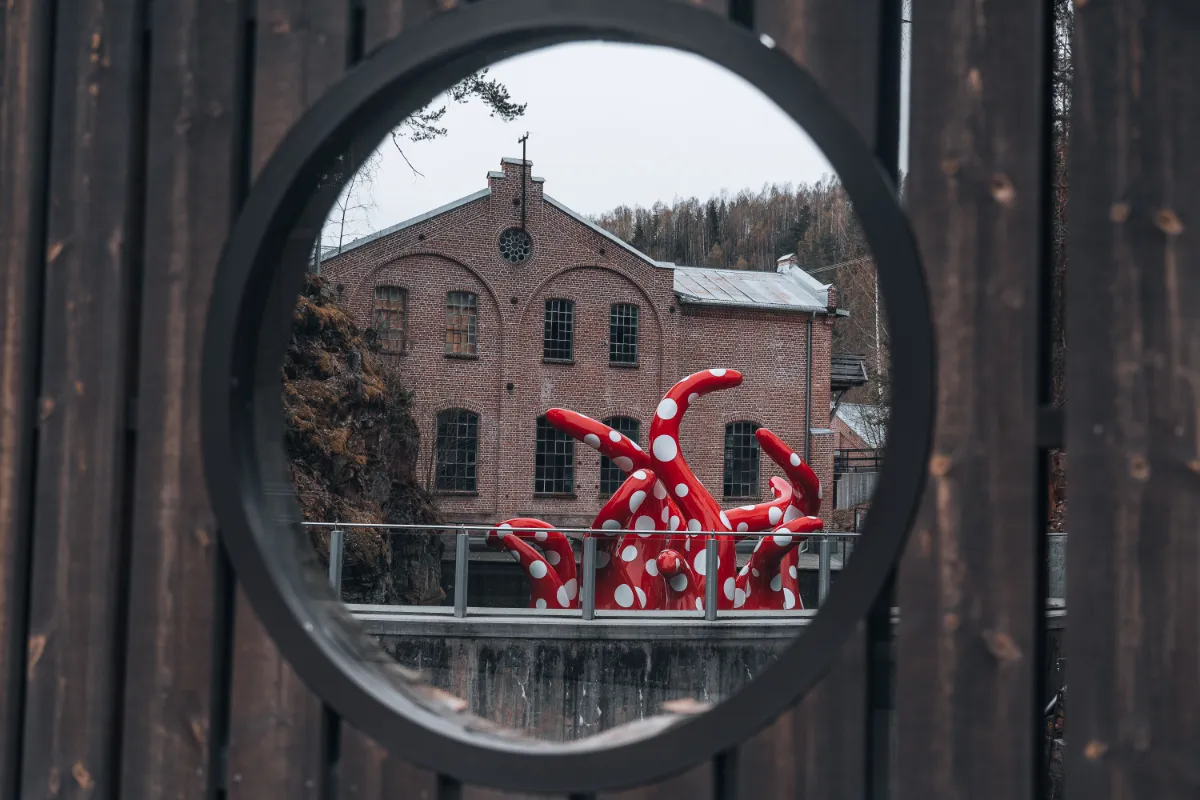
The pulp mill is the largest brick building on the factory lot and is built in the industrial style that became popular in the mid-1800s. The wood pulp mill played a significant role in the industrialization of Norway, producing mechanical wood pulp for the paper industry, making reading materials such as newspapers and school books cheaper and more accessible to the general public.

The pulp mill today houses an industrial museum with a unique collection of machinery and equipment that has been well-preserved since the mill ceased production in 1955. It is impressive to see the machines in their original setting and to see some of them working!

We are often disappointed by the lack of interactivity in museum exhibitions or the overwhelming amount of information often unavailable in English. However, we were impressed by the industrial museum in Kistefos, which delivered enough information and interactivity and even incorporated an art exhibition into the old factory building. It was fascinating, and the former pulp mill was another highlight of our trip to Kistefos!
You feel like you’re going back in time to when the forest was the most important natural resource, and timber arrived at the pulp mill through a log conveyor from the river and left the building as readily processed wood pulp.
Visitor Information
The Kistefos Museum is open from the end of April to mid-October.
However, the sculpture park is accessible at any time of the year, whether during regular opening hours or not. Note that some sculptures might be covered or turned off outside the regular season and opening hours.
You can purchase tickets online or at the museum entrance.
- The entrance fee is NOK 195 for adults.
- Children (up to and including 16) have free entrance.
The museum also has a café and a gift shop, where visitors can purchase souvenirs and art books.

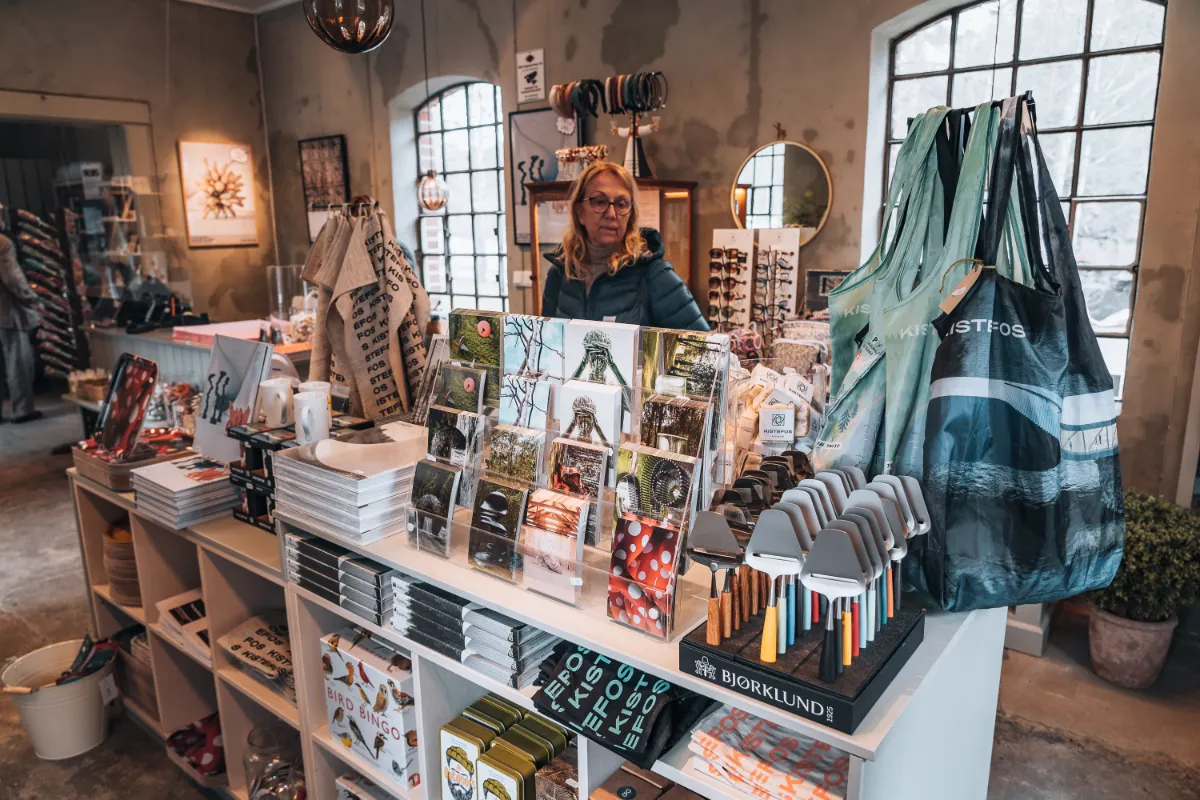
Getting to Kistefos Museum
Kistefos Museum is located in Jevnaker, about an hour’s drive north of Oslo. The easiest way to get there is by car, but you can also take the VY66 express bus between Oslo and Jevnaker.
The bus leaves from Oslo Bus Terminal at 10:15 and returns from Jevnaker at 16:50. The journey takes approximately two hours, and tickets cost NOK 235 for a one-way ticket.
The bus runs only on Thursdays, Fridays, Saturdays, and Sundays from June until October. You can combine the visit to Kistefos Museum with a stop at Hadeland Glassverk, one of Norway’s oldest glassworks.
Tip:
Getting to Kistefos by public transport on the days when Vy66 Express bus doesn´t go is tricky, but not impossible. Here is a suggestion from a member of our FB group Norway: Tips for Travellers, who visited Kistefos in May.
Take the bus 200 from Oslo bus station to Hønefoss (around 150 NOK) then taxi from Hønefoss to the museum (around 450 NOK). On the way back take the bus 103 (20 mins walk from the museum; limited schedule on a Sunday; 40 NOK), then bus 200 back to Oslo.


Conclusion: Is Kistefos Museum Worth It?
If you’re wondering whether to visit Kistefos Museum, we highly recommend it!
The museum offers a unique experience with its combination of art, architecture, and history. The Twist Gallery is a highlight of the museum and is a must-see attraction for art and architecture enthusiasts.
Additionally, the surrounding sculpture park and industrial museum provide for a lovely walk in beautiful nature.
